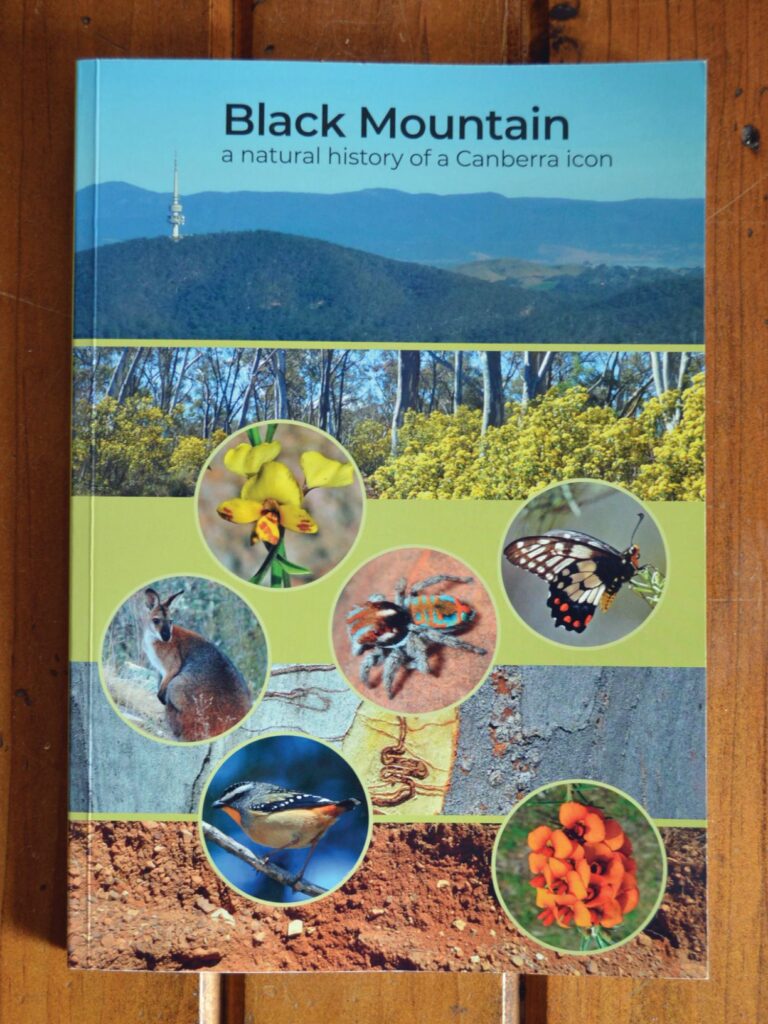This exciting and informative new reference book, written by environmental gurus Ian Fraser and Rosemary Purdy and published by not-for-profit organisation, Friends of Black Mountain, is based on background papers presented by local experts at the 2018 Black Mountain Symposium.

Black Mountain: A Natural History of a Canberra Icon (RRP $35) has everything you need to know about Black Mountain – its geography and geology, flora and fauna, its people, and its past, present and future. A host of chapters include Geological Evolution, Geology and Soils, Plants (diversity, changes in vascular plant diversity over time, characteristic understorey species, rare/missing/introduced plants), Animals, Black Mountain Walks, Changes and Challenges – and more.
This book is educational and factual without being dense and it’s full of beautiful images and detailed graphs and maps. Included throughout are explanatory breakouts, such as the identification of Black Mountain’s native Eucalypt species, family and breeding habits of resident white-winged choughs, and local Aboriginal plant use of Black Mountain species.
It deserves a place on every enthusiast’s bookshelf or coffee table and is available from reputable local bookshops and organisations.
Flora of Black Mountain Nature Reserve
Eucalyptus polyanthemos (known as Red Box) is a dominant Canberra local along the steep northerly and exposed western slopes of Black Mountain. This hardy and versatile species of Eucalypt grows 6-20 metres high. Both juvenile and adult foliage is rounded and grey/blue to blue/green. The trunk, anywhere from smooth and blotchy to creamy-white, has pale grey-and-white bark that flakes off. It gets covered in white flowers during spring and early summer and is an important food and shelter source to beneficials, birds, and other wildlife. In fact, E. polyanthemos makes an outstanding and popular variety of honey. Itgrows in a range of soil types and is drought and heat tolerant. Being an often-larger tree and known to drop the odd branch or two, it is best grown in open spaces such as parklands.
Lomandra filiformis is known as Wattle Mat Rush and is a perennial grass (technically a herb) growing to 50cm high and forming clumps 20cm wide. It is widespread in eastern Australia and often occurs in open dry-sclerophyll forests. The foliage is grey-green, 3-5mm wide, and can be lightly weeping. It has three fine brown dots on the foliage tips. Bright cream to yellow ball-shaped flowers occur mostly in spring. Lomandra filiformis grows in a range of soil types from sandy to heavy clays and it is hardy to dry, heat and cold. It is an excellent and attractive plant choice for Xeriscape gardens including our tough Canberra and surrounding conditions.
Upcoming guided walk on Black Mountain
Wildflower Rumble, Saturday 10 October 9.30am-12pm, meet at Belconnen Way entry just before Caswell Drive turnoff. Bookings essential: email [email protected]; call Linda 0437 298 711, or Libby 6296 1936. Gold coin donation appreciated.
For more:







